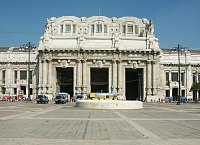
|
View of the central blockAlthough the cornerstone for this railroad station was laid early in the century (even before the architect was selected), the plan by Ulisse Stacchini was chosen, a design influenced by the great Union station in Washington, D.C. and the construction began in 1912. However, with economic instability the building was halted and the railroad station only completed in 1931 after the urging of Mussolini, who saw the station as a symbol of Fascist power. Because of the building delays, the architect was required to make a number of changes in his original plan. Still, this is considered his major work.
|
| |
|
Main block with flanking side wingsThe structure is more than 200 meters wide. |
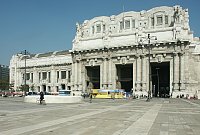
|
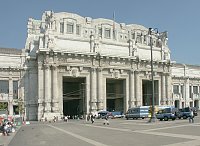
|
| |
|

|
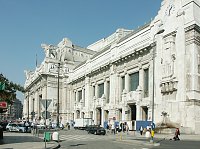
|
The sculpture emphasizes the propaganda value for the Fascist regime: lions, muscular men, and proud winged steeds, for example. |
| |
|
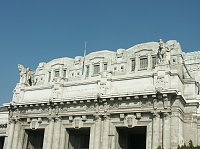
|
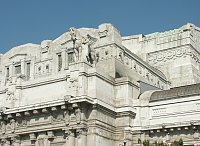
|
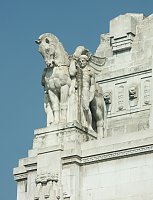
|
| |
|
A blend of stylesArt nouveau (or Liberty Style as it is sometimes called in Italy) was a popular style when the station was first designed. The building has some of the rectilinearity of Art Deco as well as some classical elements. (During Mussolini's reign, this style was sometimes called neo-Roman.) |
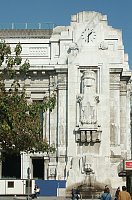
|

|












 Click here to return to index of art historical sites.
Click here to return to index of art historical sites.
 Click here to return to index of artists and architects.
Click here to return to index of artists and architects.
 Click here to return to chronological index.
Click here to return to chronological index.
 Click here to see the home page of Bluffton University.
Click here to see the home page of Bluffton University.

